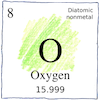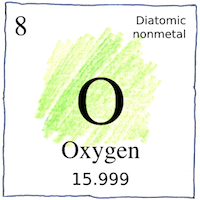Uppsala, London, Paris—Joseph Priestley, Carl Wilhelm Scheele, Antoine Lavoisier
elements

|
Combustion
The “pneumatic” chemists studied air. What, they asked, was in it that let things burn? Since the alchemist Johann Joachim Becher proposed the existence of phlogiston in 1667, most thought that things burned because of the phlogiston in them. Becher taught that phlogiston was an element contained in combustible materials and that fire was the release of phlogiston. Air, phlogistonists thought, absorbed phlogiston. The purpose of breathing was to remove phlogiston from the body. Phlogistonists said that what remained after burning was “dephlogisticated”; that is, in burning, all its phlogiston had been released. Because burning stops in an airtight container air, they thought, could absorb only a limited amount of phlogiston. Thus replete, air, they said, was phlogisticated. When Priestley discovered oxygen, he found it permitted things to burn longer than usual, so he thought oxygen must be air with its phlogiston removed. Made sense.
Codiscoveries
Carl Wilhelm Scheele discovered oxygen three years before Priestley, but Priestley was first to publish. Neither thought that oxygen disproved phlogiston theory and both called it dephlogisticated air. Antoine Lavoisier, however, having read papers by Priestley and Cavendish and personal letters from Scheele, showed that dephlogisticated air had weight and this weight was added to metals when rusted. This overthrew phlogiston theory. Combustion, breathing, and rusting could now all be seen as degrees of oxydation.
Oxygène
Antoine Lavoisier named oxygène “acid-former” in Greek because he wrongly thought it was required in the composition of acids. Fire, breath, life itself depends on the biting element in air. Let it go to your head; without it you are dead. Too much, however, can burn you up.



Phlogistón is “burning up” in Greek. Antoine Lavoisier named the inert part of air azote for “lifeless” in Greek, but in English we call it nitrogen. The Scottish physician Daniel Rutherford discovered nitrogen in 1772, it was isolated first by Joseph Priestley in 1774, and it was named by the French chemist Jean-Antoine Chaptal in 1790 because it was found in nitric acid, “nitre-forming” in Greek.
See also in The book of science:
Readings in wikipedia:
Other readings: